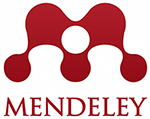Modelos de Referencia de Arquitectura Empresarial para la Industria de Educación Superior
DOI:
https://doi.org/10.26871/killkana_tecnica.v2i1.288Resumen
La digitalización de las universidades es uno de los grandes desafíos de la universidad ecuatoriana en la actualidad. La búsqueda de la calidad en la educación superior implica el logro de transformaciones desde la perspectiva estratégica, por lo que los líderes de TI deben estar preparados para formar parte del equipo de toma de decisiones que entienda las necesidades empresariales, proponga soluciones tecnológicas que garanticen la generación de valor. A lo largo del tiempo, la falta de entendimiento de las necesidades de los grupos de interés, ha llevado a proponer soluciones aisladas y desconectadas, que han abordado los problemas sin hacer un análisis causal. El presente trabajo, busca motivar a los líderes de TI de las instituciones de educación superior del Ecuador la implementación de procesos de arquitectura empresarial a plantear soluciones estratégicas y aborden la problemática de las universidades de forma integral, articulando los componentes estratégicos, del negocio, de las aplicaciones, datos y la tecnología a través de arquitectura empresarial. La propuesta se basa en el marco de referencia TOGAF y su metodología ADM, a la que se suman una lista de marcos de referencia, modelos, estándares y buenas prácticas alineadas a la educación superior. Estos referentes deberán ser adoptados en función del contexto la necesidad de cada institución. en el entorno en el que se aplican. Cabe mencionar que en este trabajo se han omitido otras herramientas y métodos propios del marco de referencia, los cuales deberán ser adoptados en el ejercicio de la arquitectura empresarial.
Descargas
Citas
[2] B. Avila, “Formulación de Visionamiento Estratégico de Arquitectura Empresarial aplicado a Entidades de Educación Superior: Un Caso de Aplicación.,” Universidad de las Américas, 2016.
[3] M. Darío Arango Serna, J. Enrique Londoño Salazar, and J. Andrés Zapata Cortés, “ARQUITECTURA EMPRESARIAL – UNA VISIÓN GENERAL,” Rev. Ing. Univ. Medellín, vol. 9174, no. 16, 2010.
[4] “Business Strategy - Enterprise Architecture.” .
[5] Wikidot, “Business Architecture - Enterprise Architecture.” .
[6] wikidot, “Application Architecture - Enterprise Architecture.” .
[7] Wikidot, “Information Architecture - Enterprise Architecture.” .
[8] wikidot, “Technology Architecture - Enterprise Architecture.” .
[9] C. O’Rourke, N. Fishman, and W. Selkow, Enterprise architecture using the Zachman Framework. Course Technology, a division of Thomson Learning, 2003.
[10] J. Schekkerman, How to survive in the jungle of enterprise architecture frameworks : creating or choosing an enterprise architecture framework. Trafford, 2004.
[11] “Federal Enterprise Architecture Framework,” 2013.
[12] R. S. Bittler and G. Kreizman, “Gartner Enterprise Architecture Process: Evolution 2005,” Gart. Enterp. Archit. Process, no. October, p. 12, 2005.
[13] The Open Group, TOGAF Versión 9.1. 2011.
[14] J. Laviña Orueta dir., L. Mengual Pavón dir., and F. Telefónica, Libro blanco de la universidad digital 2010. 2008.
[15] M. E. Porter and M. E. Rosas Sánchez, Estrategia competitiva : técnicas para el análisis de los sectores industriales y de la competencia. Continetal, 2000.
[16] T. del Marmol, BCG growth-share matrix. .
[17] APQC, “Education Process Classification Framework 7.0.5,” 2016.
[18] IWA, “Guía de aplicación -IWA 2 - Sistemas de getión de la calidad para organizaciones educativas,” pp. 1–100, 2002.
[19] Project Management Institute, PMBOK: Guía de Fundamentos de Dirección de Proyectos. 2013.
[20] O. of G. Great Britain. Office of Government Commerce. and O. of G. Commerce, Managing successful projects with PRINCE2., 5th ed. TSO, 2009.
[21] Deloitte, “Tendencias Mundiales de Capital Humano 2017.” .
[22] ISACA, COBIT 5 - Un Marco de Negocio para el Gobierno y la Gestión de TI de la Empresa. 2012.
[23] I2B, “¿Qué se entiende por SOA, y cuáles son sus beneficios? | I2B Intelligence to Business.” .
[24] M. Mosley, “DAMA DMBOK Functional Framework,” Dama-Dmbok, vol. 3.02, pp. 1–19, 2008.
[25] ISO, “ISO 27002 en español,” Norm. ISO, vol. 2013, 2013.










